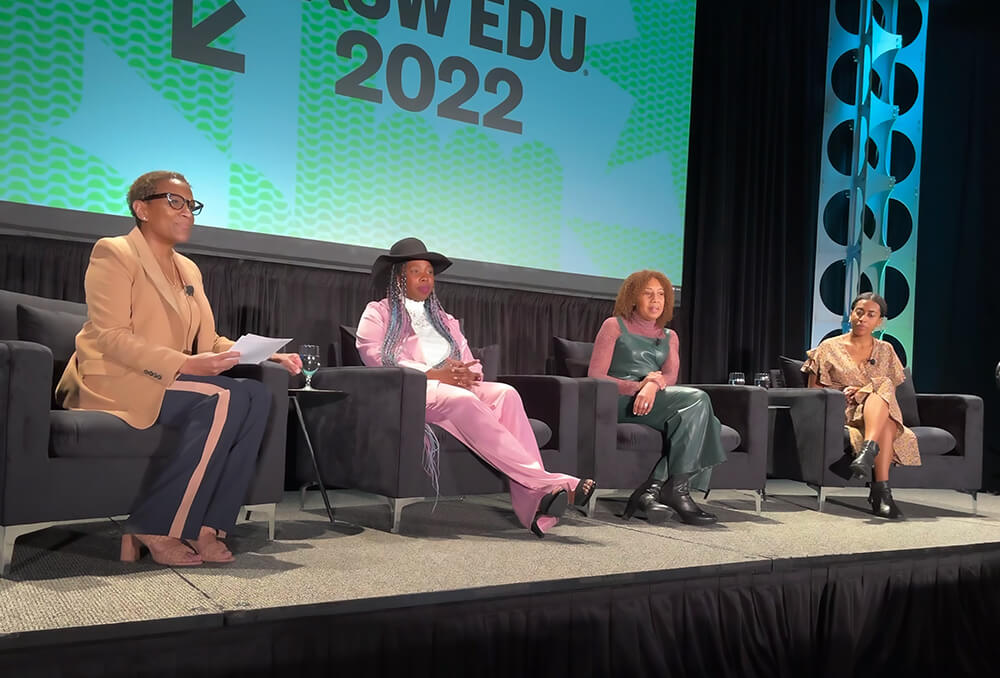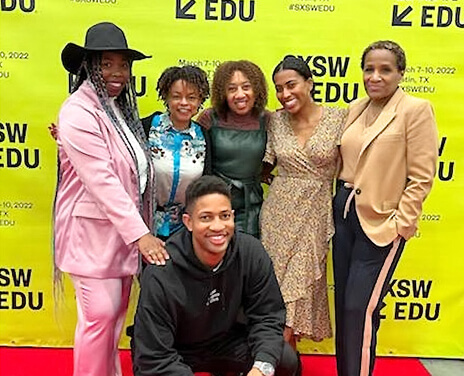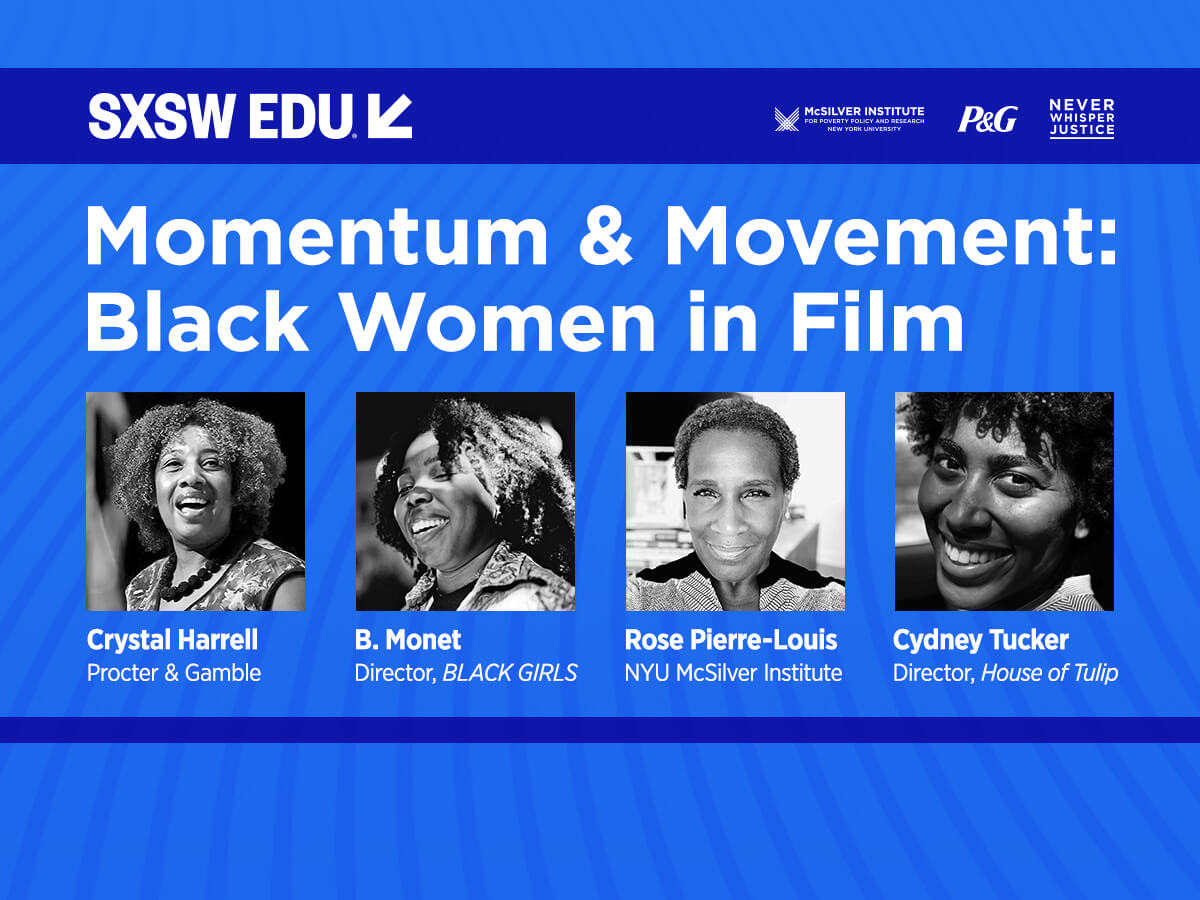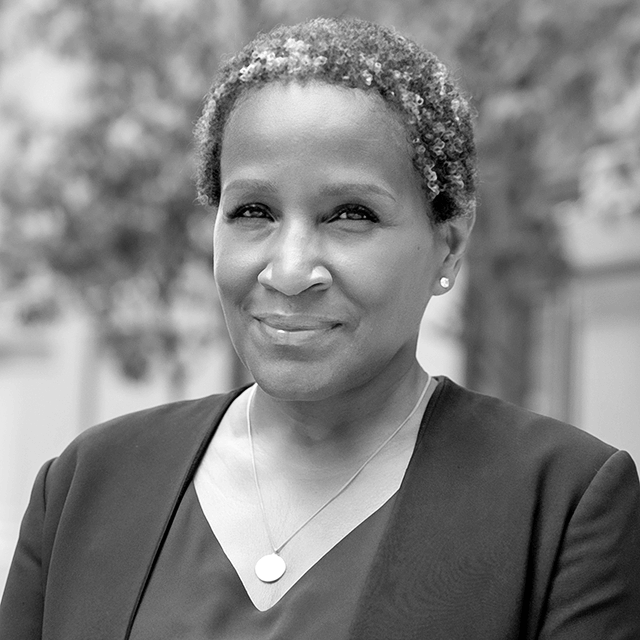Black women’s images have been largely missing for much of Hollywood’s history, and recent progress has been slow, due to systemic barriers. Last week McSilver Chief Operating Officer Rose Pierre-Louis moderated a discussion at the SXSW EDU conference in Austin, Texas about what it will take to move forward. Among those sharing their insights during the panel, titled “Momentum & Movement: Black Women in Film,” were B. Monet, Director of Black Girls with Never Whisper Justice; Crystal Harrell, Senior Director of Corporate Communications at Procter & Gamble; and Cydney Tucker, Co-Producer of House Of Tulip with Never Whisper Justice. McSilver co-sponsored the panel discussion with Never Whisper Justice and Procter & Gamble.
Video Recording
Pierre-Louis noted that Halle Berry made history in 2002 when she became the first Black woman to win the best actress Oscar for her role in Monster’s Ball. “It has been 20 years since Halle Berry won that Oscar and since then there hasn’t been another Black woman to receive that Oscar for the lead actress, and it’s not because of a lack of talent or Black women who are deserving of that prestigious award,” she remarked. To provide further context, she provided several statistics from a report by the Geena Davis Institute on Gender in Media, including the following:
- Black girls and women are 6.5% of the U.S. population, but only 3.7% of leads or co-leads in the 100 top-grossing films of the last decade. This figure has improved in recent years, but not by much.
- Only one-in-five of black leading women from the past decade have had a dark skin tone.
- 57% of Black leading women from popular films in the past decade are depicted with hairstyles that conform to European standards of beauty as opposed to natural black hairstyles.
“Image-making was not made for Black people. Even film stock was not made for darker skin. So I think we still have to realize that there is this facade of seeing a lot of us in ads and posters and it makes it feel that there is this ‘forwarding’ happening, but we’re still not there,” remarked B. Monet.

Left-to-right: Rose Pierre-Louis, B. Monet, Crystall Harrell, Cydney Tucker
Tucker said, “There is a conversation that needs to be had about diversity and inclusion, but also what that means…about the images that are being portrayed. [It’s important that we are] not also being pigeon-holed to stories that are about Black trauma and Black death, and only being hired for those. Not only does that perpetuate certain images that are very toxic to our community…but it also makes it so that we don’t see certain elements of ourselves in achievement or in elements of joy. That really weights down the psyches of not only people who are viewing the content, but the creators making that content.”
 Harrell discussed Procter & Gamble’s Widen the Screen and Queen Collective initiatives, which aim to create opportunities for filmmakers of color and emerging Black women filmmakers, respectively. She said it’s important to support Black image makers behind the camera, especially in this moment when equity and inclusion have a rare spotlight. “With the racial reckoning we did see a huge amount of investment come into the community and partners, and absolutely, that’s needed; but just as importantly, it’s what are the actions that you want to take to make sure we are making systemic change.”
Harrell discussed Procter & Gamble’s Widen the Screen and Queen Collective initiatives, which aim to create opportunities for filmmakers of color and emerging Black women filmmakers, respectively. She said it’s important to support Black image makers behind the camera, especially in this moment when equity and inclusion have a rare spotlight. “With the racial reckoning we did see a huge amount of investment come into the community and partners, and absolutely, that’s needed; but just as importantly, it’s what are the actions that you want to take to make sure we are making systemic change.”
B. Monet offered this insight for Hollywood executives: “We need folks to take chance on hiring – and it’s not just about a diversity hire. It’s not just about let me hire this Black, brown, or Asian person or trans or queer person. Hire them because they are the best person for the job. And hiring them for the job will also make it a more representative story, because they will be able to speak to an area or community that you may not be able to.”
See the event page at SXSW EDU.

